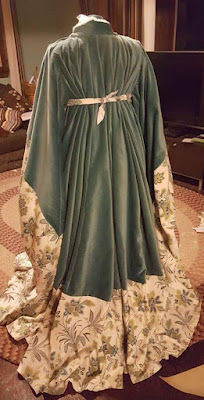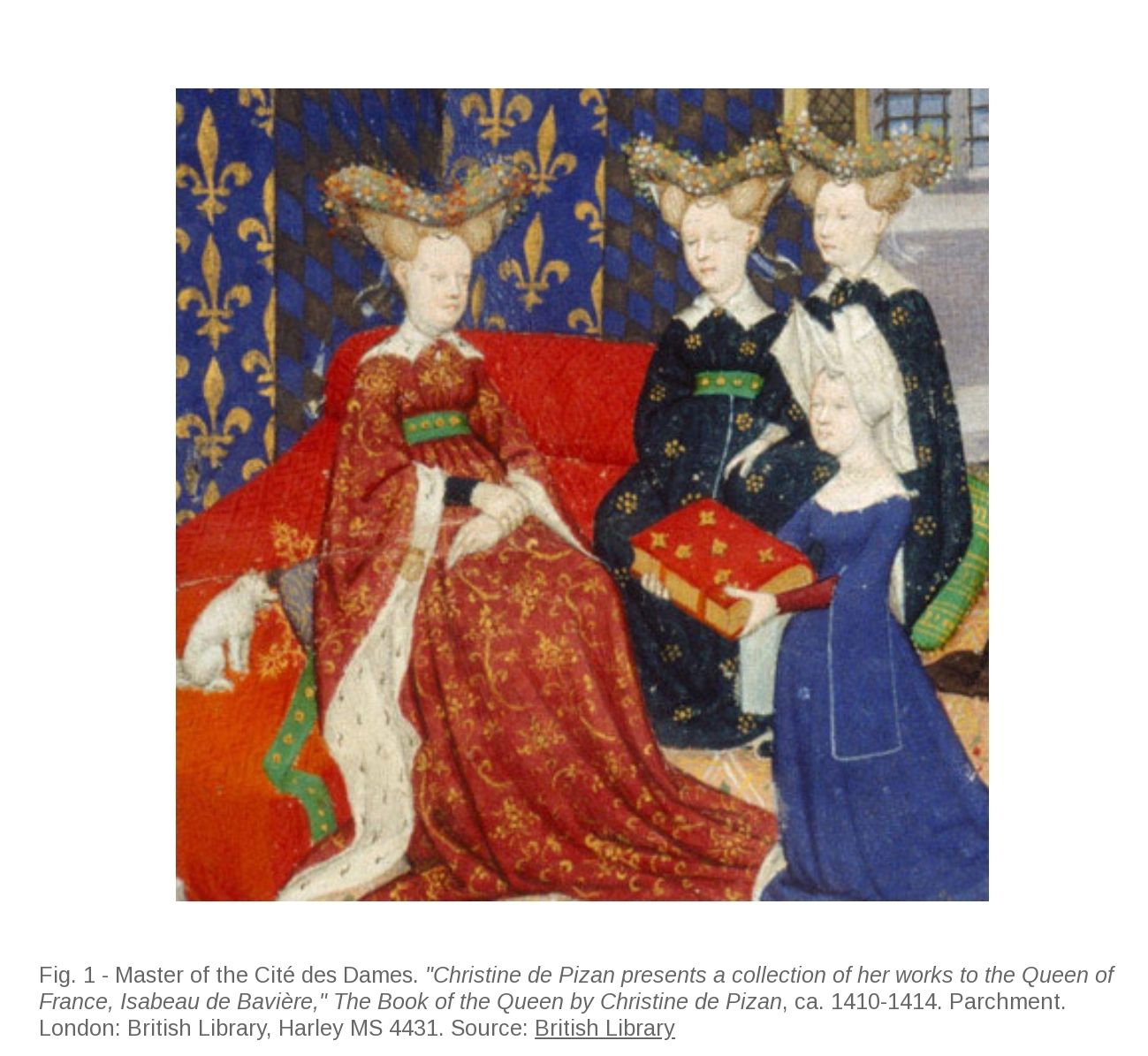1403. Folio 78r
This is a long term Project that is still in the planning and gather phase, but I wanted to gather all my info in one place, and figured it might be helpful to other folks.
This is a long term Project that is still in the planning and gather phase, but I wanted to gather all my info in one place, and figured it might be helpful to other folks.
I've made 3 separate Houppelandes in the past, and a Burgundian gown.
Upon this garment I went on to make a second one, this time for a friend, and it became an A&S entry for a competition, which I ended up wining for my division. Woot!
My first one is here on my old blog.
Way back in the "beginning" of my SCA adventure. Patterned linen, completely unlined, and based on a gore pattern to be extremely fabric frugal. It was probably created out 4 yards of wide fabric.
Ironically at the time, I thought it was patterned very wrong because it wasn't a circle based pattern. And while it did have some pattern issues, I discovered with the documentation of the Prague houppelande, that I was actually on the right track with a gore based pattern.
I also did a lot more research into the visual changes found, which can be found here. And a Houppelande Class Handout
So given this Prague Houppelande Documentation, and my new research I set out to make a new Houppelande.
This particular Houppelande was a huge improvement! I was cotton velvet, with a wide guard to make up for the lack of velvet fabric. It lined in faux fur, to be closer to the information given on the Prague houppelande documentation. The pattern made the drape fall the right way, and I made a break though discovery for gore based sleeves. Unfortunately much of the process pics of this garment were lost.
Since that time, I've wanted to take the the lessons learned from the last two houppes, along with some more recent research into the inventories, silk trade, and fur usage to create another Houppelande.
The kind of reproduction silk velvet I would prefer to use, just doesn't exist. Velvet at this time is just starting to be available in larger quantities, and is considered a very in vogue textile. Throughout the inventories you see formal court houppelandes listed as velvet, either woven or embroidered with gold.
**Update** I've changed the fabric,
See this post for my reasons why.
See this post for my geek about the new fabric.
I've obtained some gorgeous silk/rayon velvet blend, 54" wide, with a gold foil motif that is a facsimile of a 15th century Ottoman motif.
I found this fabric suitable in the drape, the base fabric content is silk, and rayon often used a modern substitute for silk. It's a crushed velvet, which is unfortunate, and not period, but the gold motif that is period makes up for it. And it came with enough yardage for such a project. It's also purple, which is the preferred color of the lady in one of my go to inventory entries.
The original extant piece that this pattern clearly is representing. I might do a bit of embroidery to push my fabric closer to this period example.
This manuscript image shows the Queen Isabeau in a houppelande of red and gold in a floral vine pattern similar to the fabric I have.
This is a green and gold silk produced in Venice Italy in the beginning of the 15th century, which has a very similar vine and floral pattern, that could have easily made it's way into France through the Italian trade guilds. Venice was also known for it's silk velvet production.
So, while not perfectly correct for my location, there are a few European silks of the time, creating a similar vine motif, and due to the lucrative textile trade, it's not unfeasible that something resembling this fabric could end up in Parisian Court.
*Update* with the new fabric and more concise information about the width of period velvet and fur plate I've updated my pattern. See this post.
I've laid out a cutting diagram, that will best utilize the fabric. Because I'm following a gore based pattern, and not prioritizing keeping the pattern direction vertical, (which is period, even seen on the Prague houppe) I need about 8 yards of this fabric, with a bit to spare, to figure out the collar, and the epaulets.
The big thing with this gown, it that I'm going to be using real fur! I've used real fur in smaller projects, facings, hat, plastron, faux ermine blanket etc. but this will be my first time lining and entire garment in real fur. My partner in crime, at Lyon Fur, has the ability to obtain reasonably priced vair plates.
I'm choosing to order these Black Vair plates, due to cost, solid color making it easier for piecing, and because there was a huge trend in the late 14th/early 15th century for black furs, so even though this particular fur is a less expensive form of vair, it still would have been considered fashionable for the court of Charles IV.
**Update** the sample plate we ordered was too stiff to pair with this particular fashion fabric, would ruin the drape and would make it unsustainably heavy. Due to camera settings, and screen settings it turned out to be a dark redwerk instead of the black squirrel it initially looked like. We ordered a gris sample, considered minivair in conspicuous places, with a suitable redwerk in hidden areas, but ultimately decided to use ermine. Ermine yep! No tails, but ermine.
The plates measure 55cm x 115 cm, so if I laid them out just like the fabric, I'd need 14 plates, but fur is something that has a very obvious fur direction, so I'm going to order a few extra, 20 total, and going to have to piece several gore panels. luckily I have a modern fur machine on hand to help. I've not yet come up with a cutting diagram.
One of the things we see referenced is that fur linings are often removeable, probably because they have separate cleaning needs, and because a furrier would have been a highly skilled profession. The inventories show that houppelandes tended to have their own dedicated fur lining. So I am going to be interlining the fur with linen and pad stitching for stability, and basting the fur in.
I am also considering lining the fashion velvet with a thin silk, so that it can still be period appropriate, and versatile when the fur lining is not being worn.
*Update* I have seen enough evidence to support a silk satin lining, and so chose a white 12mm harborti silk for the lining.
Church of Santa Maria in Piano (Loreto Aprutino, PE, Abruzzo - Italy).
St. Ursula, fresco dating back to 1420 c. Houppelande with red (silk) lining.







No comments:
Post a Comment